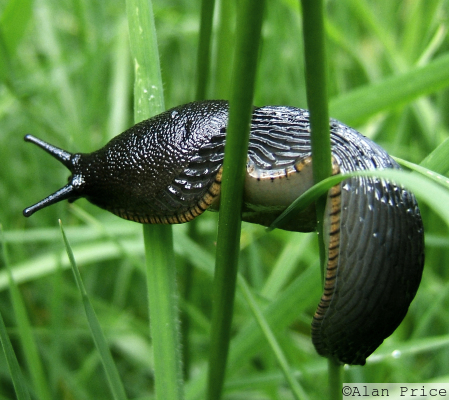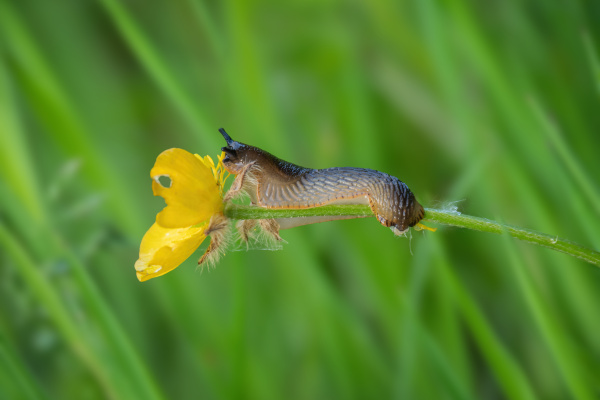Slug
Arion
<
>


 Type
Type Invertebrate: Other
Invertebrate: Other Status
Status Common
Common Widespread
Widespread Season
Season All Year Round
All Year Round In undergrowth at the sides of the towpath and anywhere damp. Look out
Slugs, like snails, are land-based gastropods – one of the few groups of animals to become successful in all three major habitats: the ocean, fresh waters and land. While there are many similarities between slugs and snails, there are also some significant differences – the main one being that snails have a shell they can retract into while slugs do not.
While snails hibernate over winter, slugs don’t, and you’ll find them anywhere there’s a temperature in excess of 5°C. Slugs also love dampness, so the best time to find them is after heavy rainfall. The vast majority, however, live underground, nibbling on roots and seeds and laying eggs – slugs lay up to 100 eggs multiple times every year.
A vital part of any healthy ecosystem, slugs live at fairly high densities. In a cubic metre of a garden where harmful chemicals aren’t used, there could be as many as 200 slugs! While certain breeds can consume countless varieties of plants, most eat decomposing vegetation – making them incredibly important.
These amazing creatures can consume around 40 times their weight in a day and can stretch to 20 times their length to fit through narrow gaps!
What’s more, slugs have truly impressive homing instincts and leave a unique scent trail so they can find their way back to where they came from.
Arion ater is a very common slug, but they may be various colours, including brown, black, grey, green, orange or red.
All Arion species are large and bulky, lack a keel along their back (sometimes referred to as 'round-back' slugs) and have bell-shaped bodies when contracted.The foot fringe may be red, orange, yellow or grey, each with dark stripes. They have colourless but very sticky mucus.


